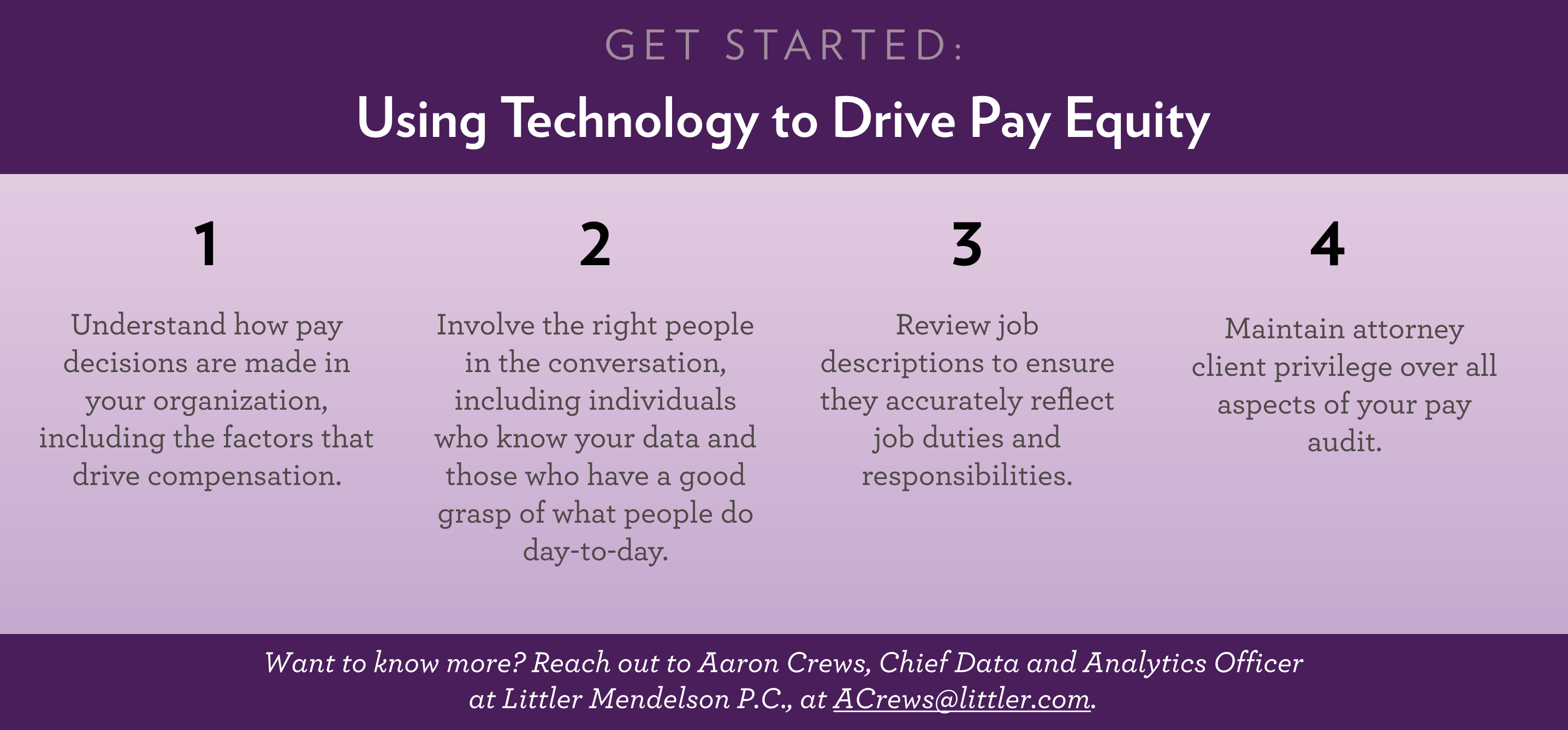As the managing partners and general counsel of top law firms and corporate legal departments, LCLD Members are some of the most powerful legal leaders in the United States. But some of our Members go above and beyond in applying their leadership to advance diversity and inclusion at their organizations and in the broader legal profession. These individuals exemplify LCLD's mission to make the legal profession as diverse as the nation it serves.
LCLD asked Tom Bender, Co-President and Managing Director of Littler Mendelson P.C., to share one of the most innovative, impactful ways his organization is advancing inclusion.

1. Provide a brief summary of your initiative.
Diving deep into the pay equity process forced us to think hard about how people analyze and understand issues related to the gender pay gap. Our sense was the commonly accepted understanding of the root causes of unequal pay for women and other historically marginalized groups was probably incomplete, if not wildly inaccurate.
If people actually understood what drives persistent pay disparities, why did they continue? Most organizations assumed they were paying their people in accordance with their compensation policies and that resulted in fair pay, but how could they be sure? We came to believe that where impermissible pay disparities existed, data could tell us what parts of the compensation process drove those disparities, and clients could take proactive steps to fix any issues.
In late 2017 we built the Littler Pay Equity Assessment™, which allows us to analyze target data to:
- Identify pay disparities within an organization and whether or not they are statistically significant.
- Identify the facets of the at issue compensation structure that cause those disparities.
- Assess alternative compensation structures and what effect they might have to improve, exacerbate, or create new disparities.
This tool proves that in the modern world data analysis is a better guide than gut feelings or experience, and data visualizations are superior to complex mathematical outputs.
2. What inspired you to take action on this element of D&I?
In our experience, all organizations believe it is vitally important to pay their people fairly. However, despite best efforts, sincere desire, and innumerable hours spent crafting and adjusting compensation structures that are believed to be both fair and transparent, most organizations feel hamstrung in their ability to accurately identify and resolve any impermissible pay disparities that exist. The historically available tools are traditional statistical analysis tools. Their outputs consist of statistics dumped into a spreadsheet. Many leaders struggle to understand and make use of these outputs, and it is very difficult to understand what impact changes to a compensation structure might have. Because of the importance we and our clients place on diversity, we simply felt there had to be a better way.
3. What makes your efforts innovative and different?
Our pay equity tool is grounded on the notions that data analysis provides a clearer window into pay equity issues than other means, and that data visualizations make it possible for more people to understand and make use of the information uncovered in a compensation audit.
Our dashboards do away with the need for users to understand complex statistics, and make the insights derived from the tool understandable and actionable by leaders throughout an organization.
These simple truths allow us to better understand compensation and ensure clients can assess and understand the actions and policies necessary to ensure they are paying their people fairly.
4. Are there any lessons you learned? Are there things you would do differently?
Perhaps the single biggest lesson we have learned through this process is the power of data. This has shifted how we think about the ways in which we can help clients. As a result, we have stepped up data driven initiatives across the board. If we could go back, the thing I’d do differently is to start sooner and focus more intently on our ability to leverage data. We really believe this is a game changer.
5. Has there been a ripple effect for your majority attorneys?
Our pay equity tool has opened the eyes of our attorneys to the power of data. Once people see the window data provides into the “how” and the “why” of a key diversity issue like pay equity, they become believers. This conversion is starting to ripple out across the entire firm and improving upon our ability to service and provide value to clients.

Resources:
- Pay Equity Practices Take Off | The Daily Record
- Minding the Pay Gap: What Employers Need to Know as Pay Equity Protections Widen | Littler Report


